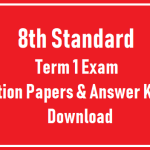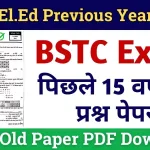AECC English Question Paper 2018
The AECC English Question Paper 2018 is designed to assess students’ understanding of English language basics, communication skills, and analytical thinking. This guide provides questions and answers covering essential topics to help students prepare thoroughly and build confidence for exams.
Grammar and Language Skills
Question: What is a noun?
Answer: A noun is a word that names a person, place, thing, or idea.
Question: Define an adjective with an example.
Answer: An adjective describes or modifies a noun. Example: “Beautiful” in “a beautiful flower.”
Question: What is the role of verbs in a sentence?
Answer: Verbs express actions, states, or occurrences in a sentence.
Question: Differentiate between transitive and intransitive verbs.
Answer: Transitive verbs require a direct object, while intransitive verbs do not.
Question: Explain the use of articles in English grammar.
Answer: Articles (a, an, the) define nouns as specific or nonspecific.
Question: What are pronouns? Give examples.
Answer: Pronouns replace nouns. Examples: he, she, it, they.
Question: Define conjunctions and provide examples.
Answer: Conjunctions join words, phrases, or clauses. Examples: and, but, or.
Question: What is the difference between “its” and “it’s”?
Answer: “Its” shows possession; “it’s” is a contraction for “it is.”
Question: Explain subject-verb agreement with an example.
Answer: A subject and verb must agree in number. Example: “She writes,” not “She write.”
Question: What are prepositions? Give examples.
Answer: Prepositions show relationships between nouns and other words. Examples: in, on, at.
Question: Define a compound sentence.
Answer: A compound sentence contains two independent clauses joined by a conjunction.
Question: What is a clause? Differentiate between independent and dependent clauses.
Answer: A clause is a group of words with a subject and verb. Independent clauses stand alone; dependent clauses cannot.
Question: Explain the use of active and passive voice.
Answer: Active voice focuses on the subject performing an action, while passive voice emphasizes the action being performed.
Question: What are homophones? Provide examples.
Answer: Homophones are words that sound the same but have different meanings. Examples: to, too, two.
Question: Define direct and indirect speech.
Answer: Direct speech quotes words exactly. Indirect speech paraphrases them.
Question: What is the function of adverbs?
Answer: Adverbs modify verbs, adjectives, or other adverbs, describing how, when, where, or to what extent.
Question: How do you form the past tense of regular verbs?
Answer: Add -ed to the base form. Example: walk → walked.
Question: What are synonyms and antonyms?
Answer: Synonyms are words with similar meanings; antonyms have opposite meanings.
Question: Explain the term “collocations” in English.
Answer: Collocations are natural combinations of words frequently used together. Example: “make a decision.”
Reading Comprehension and Vocabulary
Question: What are the key steps in answering comprehension questions?
Answer: Read the passage carefully, understand the main idea, and refer back to specific lines for answers.
Question: How can context clues help in understanding unfamiliar words?
Answer: Context clues are words or phrases around a term that provide hints to its meaning.
Question: Define the term “summary.”
Answer: A summary condenses the main points of a text into a brief overview.
Question: What is the purpose of a topic sentence?
Answer: A topic sentence expresses the main idea of a paragraph.
Question: What are idiomatic expressions?
Answer: Idiomatic expressions are phrases with meanings different from their literal interpretation. Example: “Break the ice.”
Question: How is a skimming technique used in reading?
Answer: Skimming involves quickly going through a text to get a general idea of the content.
Question: What is scanning in reading?
Answer: Scanning involves searching for specific information within a text.
Question: Define metaphor and give an example.
Answer: A metaphor compares two unrelated things without using “like” or “as.” Example: “Time is a thief.”
Question: What is a simile? Provide an example.
Answer: A simile compares two things using “like” or “as.” Example: “As brave as a lion.”
Question: What are phrasal verbs?
Answer: Phrasal verbs are phrases combining a verb with a preposition or adverb. Example: “give up.”
Question: Differentiate between formal and informal language.
Answer: Formal language is used in professional settings, while informal language suits casual conversations.
Question: What is the main idea of a text?
Answer: The main idea is the central point or theme conveyed in a text.
Question: Explain the term “inference” in reading.
Answer: Inference is drawing conclusions based on evidence and reasoning.
Question: How can synonyms improve writing?
Answer: Synonyms add variety and precision to writing by replacing repetitive words.
Question: What are transition words?
Answer: Transition words connect ideas in writing. Examples: therefore, however, additionally.
Question: Define irony with an example.
Answer: Irony involves a contrast between expectations and reality. Example: A fire station burns down.
Question: What is the significance of tone in writing?
Answer: Tone reflects the writer’s attitude toward the subject, affecting how the message is perceived.
Question: How do prefixes and suffixes change word meanings?
Answer: Prefixes and suffixes modify the meaning of root words. Example: “happy” to “unhappy.”
Question: What is the difference between literal and figurative language?
Answer: Literal language means exactly what it says; figurative language uses imaginative expressions.
Question: How does paraphrasing help in understanding texts?
Answer: Paraphrasing involves restating ideas in your own words for better comprehension.
Writing Skills
Question: What are the essential parts of an essay?
Answer: An essay includes an introduction, body paragraphs, and a conclusion.
Question: How do you write a thesis statement?
Answer: A thesis statement clearly expresses the main argument or purpose of the essay.
Question: What is the purpose of an outline in writing?
Answer: An outline organizes ideas logically before drafting.
Question: Define the term “plagiarism.”
Answer: Plagiarism is using someone else’s work without proper acknowledgment.
Question: What are cohesive devices in writing?
Answer: Cohesive devices link sentences and paragraphs for smoother flow. Examples: moreover, although.
Question: How do you write a formal letter?
Answer: A formal letter includes a header, salutation, body, closing, and signature.
Question: What are the features of a narrative essay?
Answer: Narrative essays tell a story with a clear structure, characters, and a plot.
Question: What is the difference between editing and proofreading?
Answer: Editing involves revising content, while proofreading focuses on correcting grammar and spelling.
Question: How do you write a conclusion effectively?
Answer: Summarize main points and restate the thesis in a compelling way.
Question: What is descriptive writing?
Answer: Descriptive writing vividly portrays a scene, object, or feeling using sensory details.
Question: What are persuasive writing techniques?
Answer: Persuasive writing uses logical arguments, evidence, and emotional appeals to convince readers.
Question: Define a topic sentence in paragraph writing.
Answer: A topic sentence introduces the main idea of a paragraph.
Question: What are common types of essays?
Answer: Common essay types include argumentative, descriptive, narrative, and expository essays.
Question: How do you avoid redundancy in writing?
Answer: Use concise language and avoid repeating ideas unnecessarily.
Question: Why is brainstorming important in writing?
Answer: Brainstorming generates and organizes ideas for writing tasks.
Question: What is the purpose of a bibliography in academic writing?
Answer: A bibliography lists sources used for research, ensuring proper citation.
Question: What is a hook in essay writing?
Answer: A hook is an engaging opening sentence that grabs the reader’s attention.
Question: How do you transition between paragraphs effectively?
Answer: Use transition sentences to connect ideas logically between paragraphs.
Question: What are rhetorical questions in writing?
Answer: Rhetorical questions are asked to make a point rather than elicit answers.
Ending Summary
This comprehensive guide to the AECC English Question Paper 2018 provides a range of questions and answers to strengthen grammar, reading, and writing skills. By focusing on key concepts, students can build their understanding and prepare effectively for examinations.
Latest Posts
- Step-by-step guide to download and apply for jee mains admit card 202
- Comprehensive 2025 government holidays and recruitment details for job seekers
- JEE Mains Admit Card 2025: Your Step-by-Step Guide to Downloading the Hall Ticket
- Everything You Need to Know About 2025 Government Holidays Recruitment
- Comprehensive Guide to rrb d group recruitment 2025 – Eligibility, Vacancies, and Application
- Detailed guide to nps trust recruitment 2025 vacancies, eligibility and apply process
- Comprehensive guide to hpcl recruitment 2025 notification, vacancies, and application process
- ignou bed admission 2025 complete recruitment guide with eligibility and process
- Comprehensive Guide to Indian Army Agniveer Recruitment 2025 Notification and Jobs
- Everything You Must Know About CBSE Board Exams 2025 Changes & New Rules





